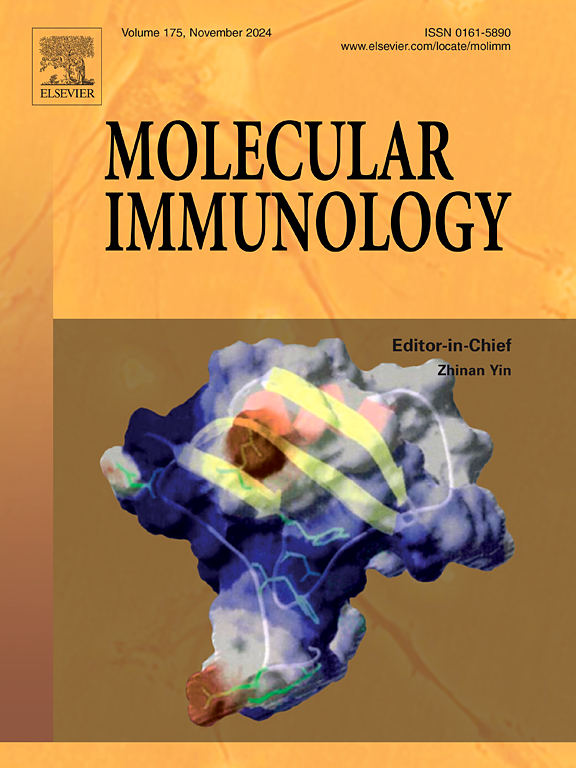Acid-sensing ion channel 1a promotes LPS-induced acute lung injury through the circRNA 18–658/miR-127–5p/TRIM72 axis
IF 3
3区 医学
Q2 BIOCHEMISTRY & MOLECULAR BIOLOGY
引用次数: 0
Abstract
Acute lung injury (ALI) is a serious disease with sudden onset, rapid progression, poor treatment response and high mortality. Acid-sensitive ion channels (ASICs) are a type of cation channel activated by extracellular acidification and are involved in the pathogenesis of inflammatory and immune diseases. Our previous research revealed that ASIC1a promotes ALI, but the specific mechanism is unclear. Circular RNAs (circRNAs) are a large class of noncoding RNAs that play important roles in the pathological processes of many diseases. However, their role in lipopolysaccharide (LPS)-induced ALI and their correlation with the ASIC1a channel remain unclear. In this study, via high-throughput sequencing, we investigated the effect of ASIC1a on circRNA expression. We focused on circRNA18–658 and its downstream signaling pathway in rat models of ALI. Our results revealed that ASIC1a promotes ALI through the circRNA18–658/miR-127–5p/TRIM72 axis, providing new targets and ideas for the study of the mechanism of ALI and the development of new drugs.
酸感离子通道1a通过circRNA 18-658 / miR-127-5p /TRIM72轴促进lps诱导的急性肺损伤
急性肺损伤(Acute lung injury, ALI)是一种发病突然、进展迅速、治疗效果差、死亡率高的严重疾病。酸敏感离子通道(asic)是一种由细胞外酸化激活的阳离子通道,参与炎症和免疫疾病的发病机制。我们之前的研究表明ASIC1a促进ALI,但具体机制尚不清楚。环状rna (circRNAs)是一类非编码rna,在许多疾病的病理过程中发挥重要作用。然而,它们在脂多糖(LPS)诱导的ALI中的作用及其与ASIC1a通道的相关性尚不清楚。在本研究中,我们通过高通量测序研究了ASIC1a对circRNA表达的影响。我们重点研究了ALI大鼠模型中的circRNA18-658及其下游信号通路。我们的研究结果揭示ASIC1a通过circRNA18-658 / miR-127-5p /TRIM72轴促进ALI,为ALI的机制研究和新药开发提供了新的靶点和思路。
本文章由计算机程序翻译,如有差异,请以英文原文为准。
求助全文
约1分钟内获得全文
求助全文
来源期刊

Molecular immunology
医学-免疫学
CiteScore
6.90
自引率
2.80%
发文量
324
审稿时长
50 days
期刊介绍:
Molecular Immunology publishes original articles, reviews and commentaries on all areas of immunology, with a particular focus on description of cellular, biochemical or genetic mechanisms underlying immunological phenomena. Studies on all model organisms, from invertebrates to humans, are suitable. Examples include, but are not restricted to:
Infection, autoimmunity, transplantation, immunodeficiencies, inflammation and tumor immunology
Mechanisms of induction, regulation and termination of innate and adaptive immunity
Intercellular communication, cooperation and regulation
Intracellular mechanisms of immunity (endocytosis, protein trafficking, pathogen recognition, antigen presentation, etc)
Mechanisms of action of the cells and molecules of the immune system
Structural analysis
Development of the immune system
Comparative immunology and evolution of the immune system
"Omics" studies and bioinformatics
Vaccines, biotechnology and therapeutic manipulation of the immune system (therapeutic antibodies, cytokines, cellular therapies, etc)
Technical developments.
 求助内容:
求助内容: 应助结果提醒方式:
应助结果提醒方式:


